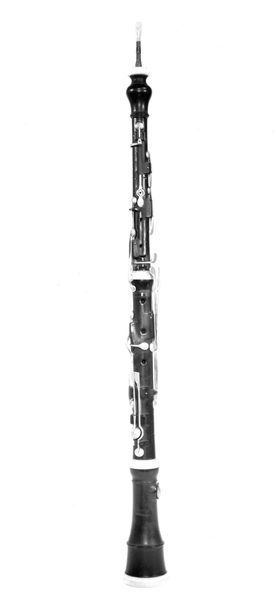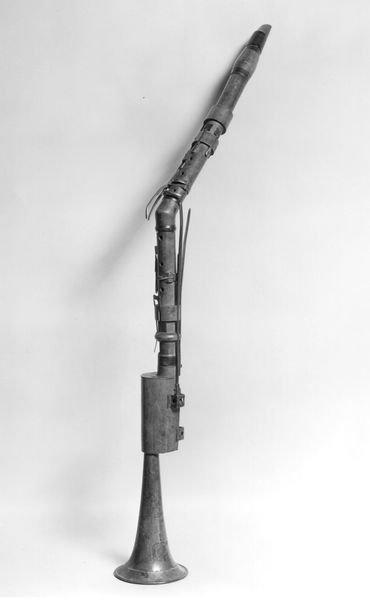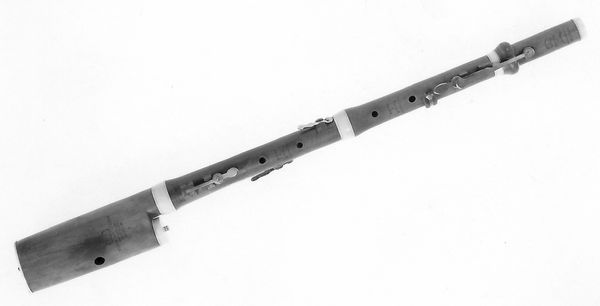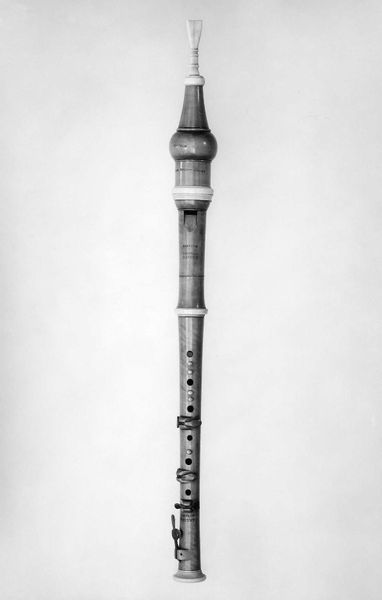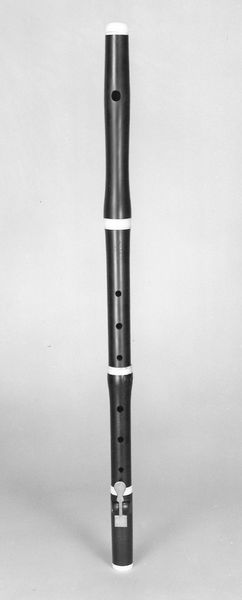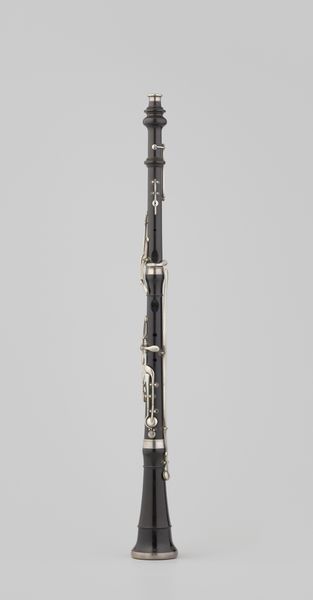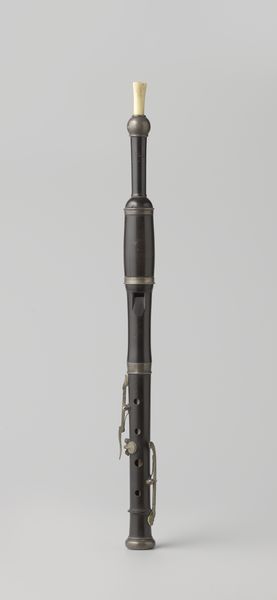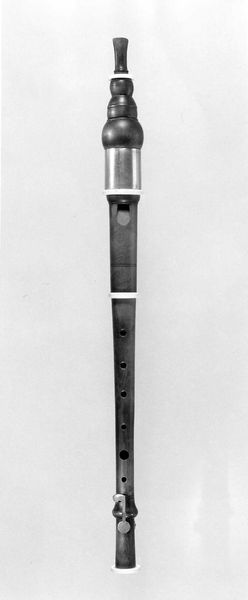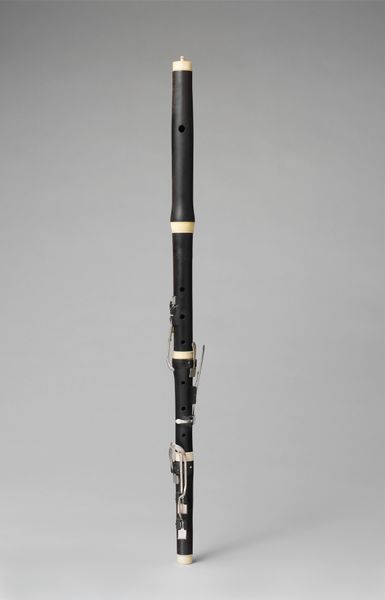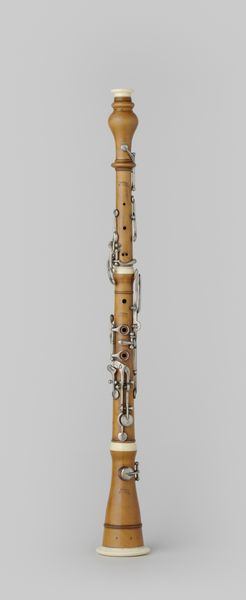
photography
#
still-life-photography
#
photography
#
musical-instrument
Dimensions: L.: 58.5 cm (23-1/8 in.): Diam. bell: 7.8 cm (3-1/8 in.)
Copyright: Public Domain
This Clarinet in C was made by Heinrich Christian Eisenbrandt in the 19th century from wood, ivory, and metal. These materials, worked by hand, reflect both established instrument-making traditions and the burgeoning industrial processes of the time. Consider the wood itself, likely carefully selected for its acoustic properties, and then precisely shaped. The ivory rings lend a touch of elegance, while the metal keys and fittings represent a turn towards mass-produced components that offered greater precision of playing, and a wider tonal range. Note the physical labor involved in the carving, turning, and polishing of the wood, alongside the metalworking skills required for the keys and mechanisms. The clarinet, though intended for making music, also exemplifies the shifting landscape of labor, politics, and consumption in the 19th century. It represents a meeting point of handcraft and industrial production. Ultimately, understanding the materials, the making, and the context of this clarinet allows us to move beyond traditional categories of ‘fine art’ versus ‘craft’, and toward a richer appreciation of its cultural significance.
Comments
No comments
Be the first to comment and join the conversation on the ultimate creative platform.
